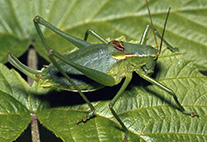Abstract
Eupinivora, new genus, is described and illustrated from the montane regions of western United States (Nevada, Utah, Wyoming, Colorado, Arizona, New Mexico, and Texas) and Mexico (Nuevo León, Durango, and Estado de Mexico). As presently defined, the genus includes seven species: E. ponderosae, n. sp. (USA: Arizona) (type species); E. angulicosta, n. sp. (Mexico: Nuevo León); E. albolineana, n. sp. (Mexico: Durango); E. thaumantias (Razowski, 1994), n. comb. (Mexico: Estado de Mexico); E. hamartopenis (Razowski, 1986), n. comb. (Mexico: Durango); E. unicolora, n. sp. (Mexico: Durango); and E. rufofascia, n. sp. (Mexico: Durango). The new genus is most closely related to Henricus Busck, 1943, from which it can be distinguished by the short upturned labial palpi, the presence of a variable cluster of long spine-like external setae from near the middle of the phallus in the male genitalia, the absence of cornuti in the vesica, the absence of the subgenital sex scales in the male, and a forewing pattern that in most of the included species is reminiscent of that of Argyrotaenia ponera Walsingham and its relatives. Four of the new species were reared from the cones of Pinus arizonica var. cooperi Blanco (Pinaceae) and one from Pinus ponderosa P. & C. Lawson; all of the species occur in habitats dominated by conifers at elevations between ca. 1700 and 2750 m. Two specimens from New Mexico were collected in traps baited with a synthetic pheromone for the bud worm Choristoneura lambertiana (Busck, 1915) (Archipini)—90% 92:8E:Z11-14AC, 10% 90:10E:Z11OH—which is consistent with that recorded for other Cochylina.

